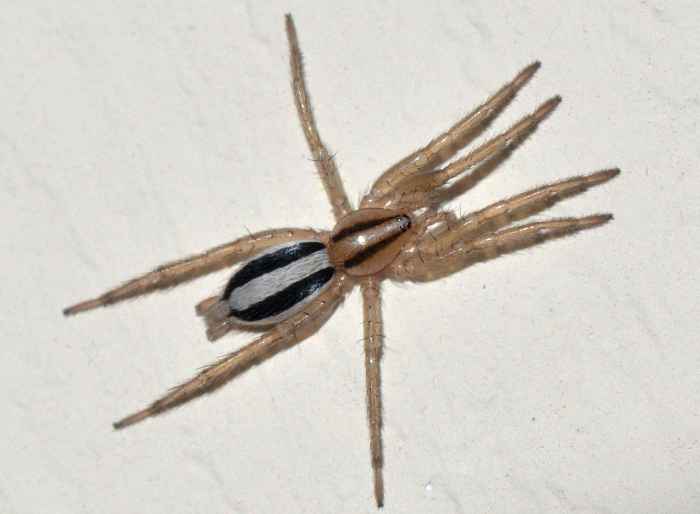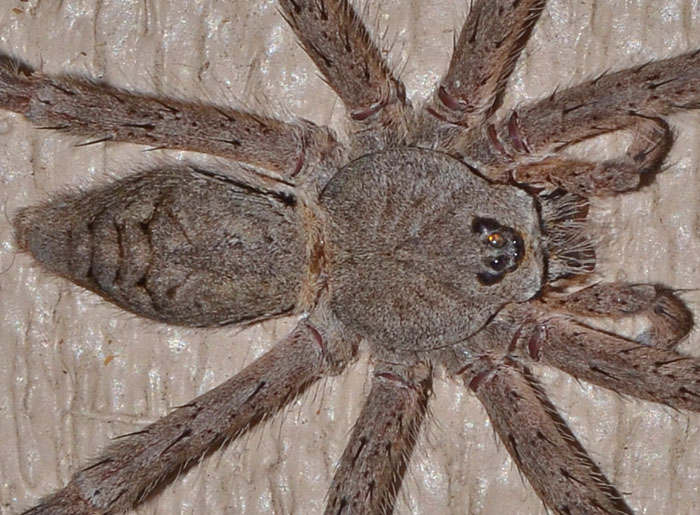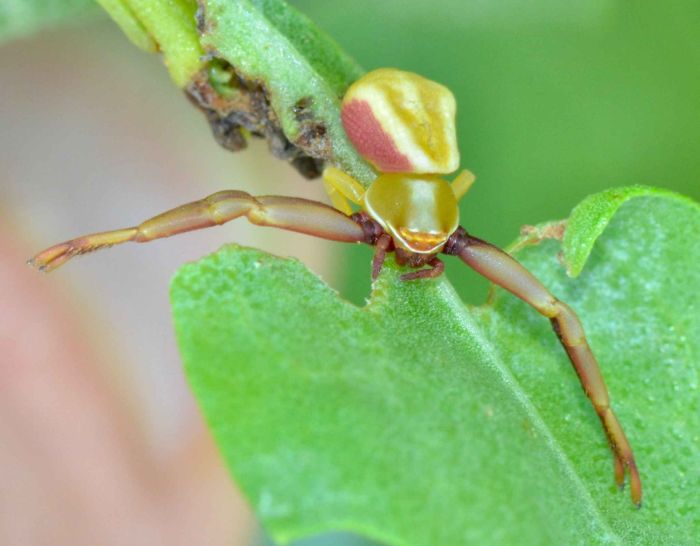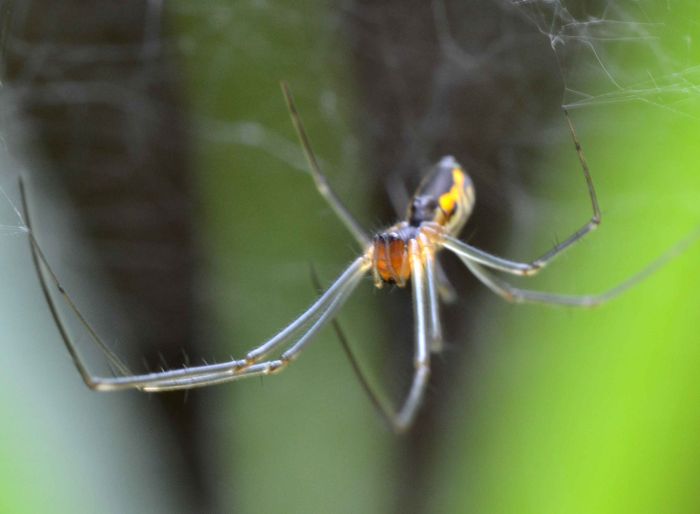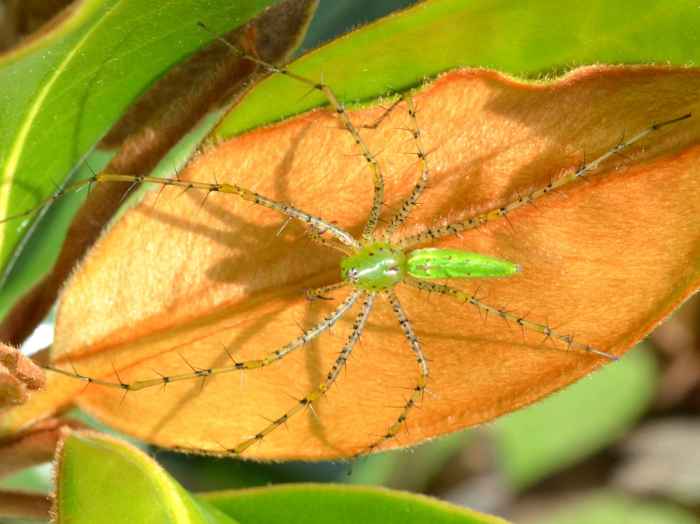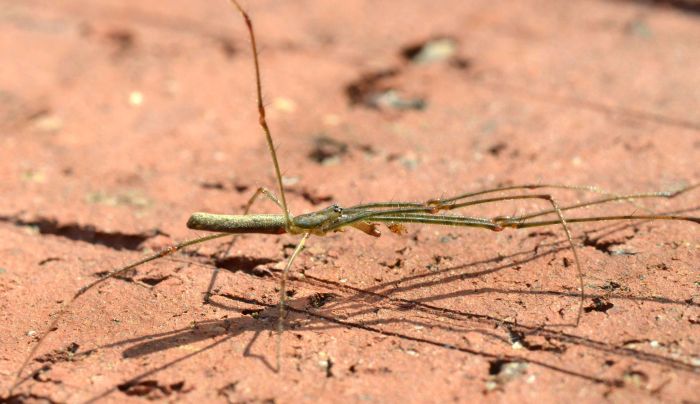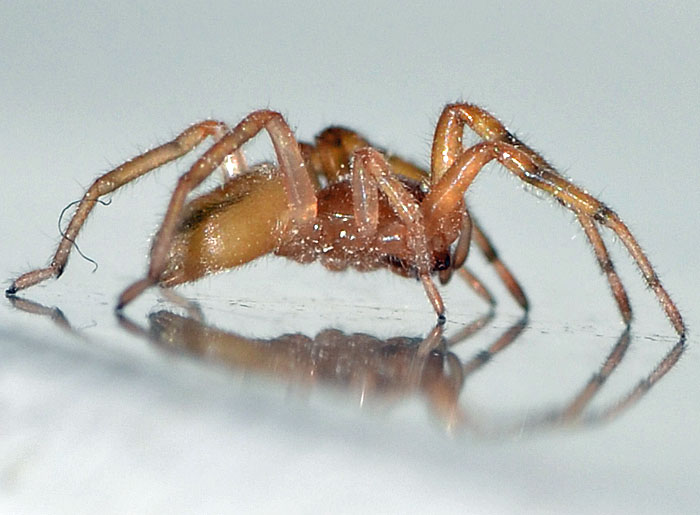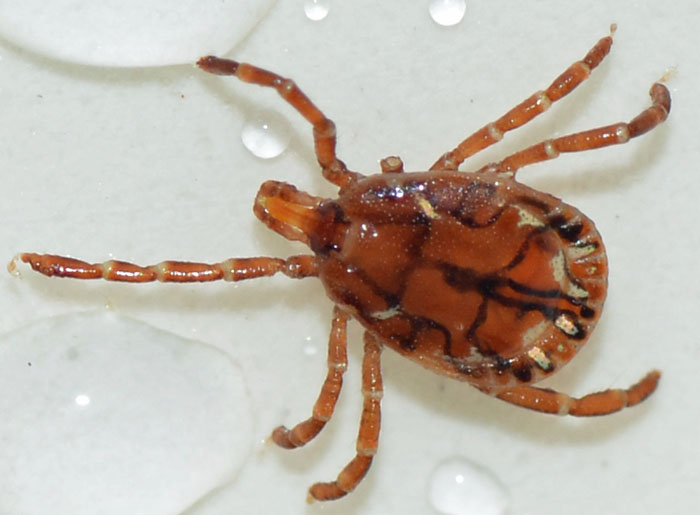 Amblyomma sp.. | I believe this is a male lone star tick (A. americanum) or a gulf cost tick (A. maculatum). In any case, I found it crawling on my hand after a "photo shoot safari" into my backyard, brushed it off into a sink, and took this photo before ... well you can guess. I was surprised to read in the WSJ that bites from the lone star tick can make humans allergic to red meat (see 2nd link below). This reaction occurs weeks or months after the bite and 3-6 hours after eating the meat. Symptoms include vomiting, abdominal cramps, hives, and anaphylaxis.
bug guide (this photo): http://bugguide.net/node/view/945538 Wall Street Journal: http://alturl.com/qdvrj | |
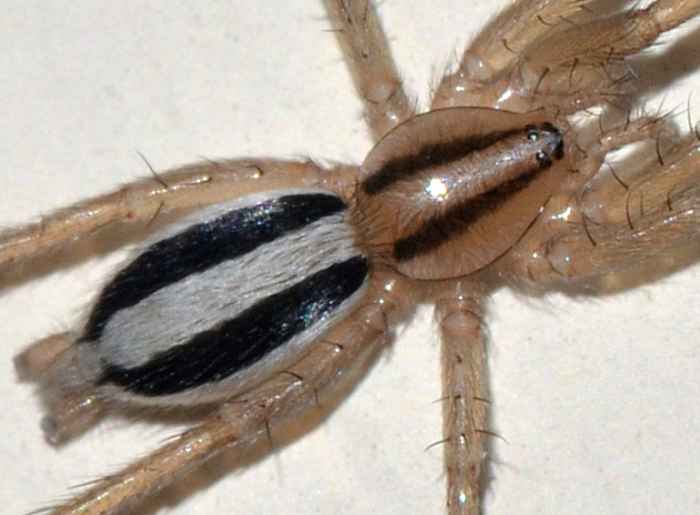 Cesonia bilineata. | This tiny ground spider is Cesonia bilineata. The genus has ten species in the US but C. bilineate is the only one in the eastern half of the country.
bug guide (these photos): http://bugguide.net/node/view/686666 | |
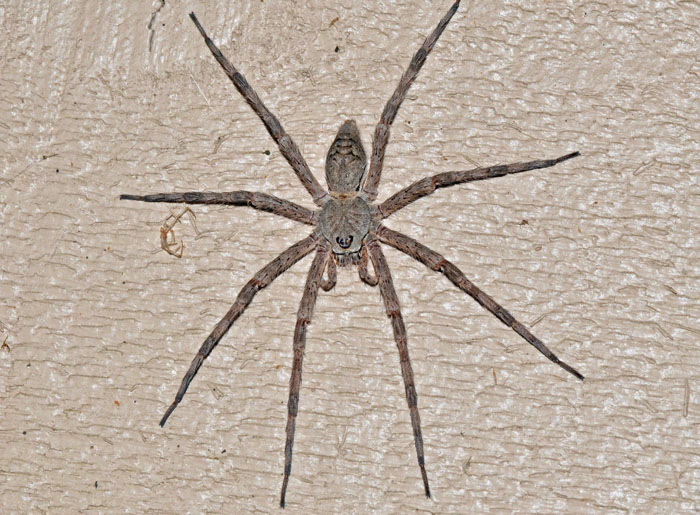 Dolomedes albineus (Whitebanded Fishing Spider). | An impressive, large spider that to the delight of our friends and visitors, decided to make its home above our main house door. Spiders in the genus Dolomedes are called Fishing Spiders because (with the exception of D. tenebrosus) they live near water and catch aquatic insects and even smaller fish as they walk on the water surface. And yes, they can walk on water!
bug guide (these photos): http://bugguide.net/node/view/991159 | |
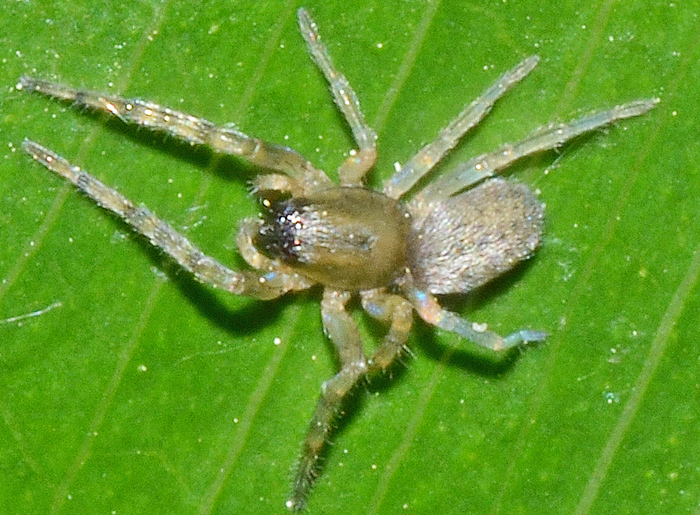 Hibana sp.. | A small Ghost Spider in the genus Hibana which has six species in North America. While reading up on this spider, I found several references that mentioned the agricultural importance of ghost spiders as enemies of damaging moths. Apparently these spiders eat the moth eggs, which make them also difficult to study in the lab. bug guide (this photo): http://bugguide.net/node/view/1206545 | |
 Latrodectus geometricus (?) (Brown Widow). | This is possibly a brown widow (Latrodectus geometricus). They have a highly variable color, are timid, and often found on houses. Unless a person is allergic or has a pre-existing medical condition, the bite causes seemingly no medical concern. Male and immature specimens do not bite. Females live up to three years and produce up to 5000 offspring per season. If present, the eggsacks are more recognizable than the spider itself. They are pale, spiky spheres. bug guide: http://bugguide.net/node/view/23403 wikipedia: http://en.wikipedia.org/wiki/Latrodectus_geometricus | |
 Leucauge venusta (Orchard Orbweaver). |
I have dozens of them in my sago palms. They scared me for years because they look a bit like back widows (to my untrained eye). Orchard spider aka orchard orbweaver aka venusta orchard weavers (Leucauge venusta). They like to hang upside-down in their often horizontal webs. They also have a facebook page. wikipedia: http://en.wikipedia.org/wiki/Leucauge_venustahttp://en.wikipedia.org/wiki/Leucauge_venusta spiderzrule: http://www.spiderzrule.com/venusta.htm | |
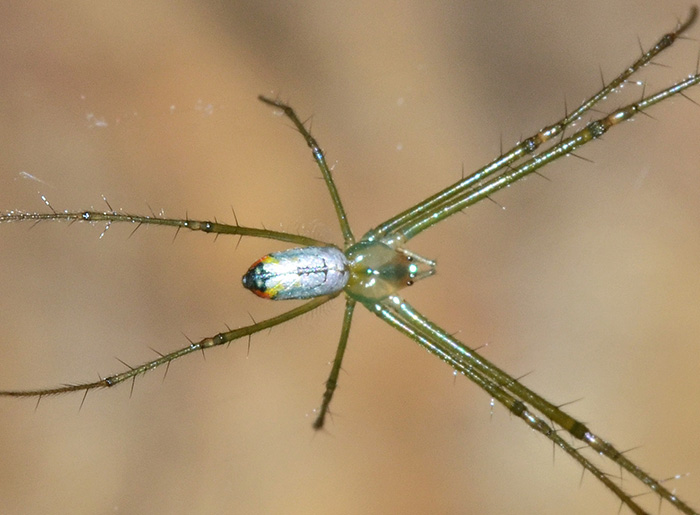 Leucauge argyrobapta. | Found from Florida south to Brazil, this little spider can feature a silvery body but overall I find this species difficult to distinguish from Leucauge venusta. bug guide (this photo): https://bugguide.net/node/view/854269 | |
 Mecaphesa sp. (Crab Spider). | This crab spider is Mecaphesa sp. Mecaphesa has 18 North American species and is often (always?) hairy. bug guide (this photo): http://bugguide.net/node/view/573845 | |
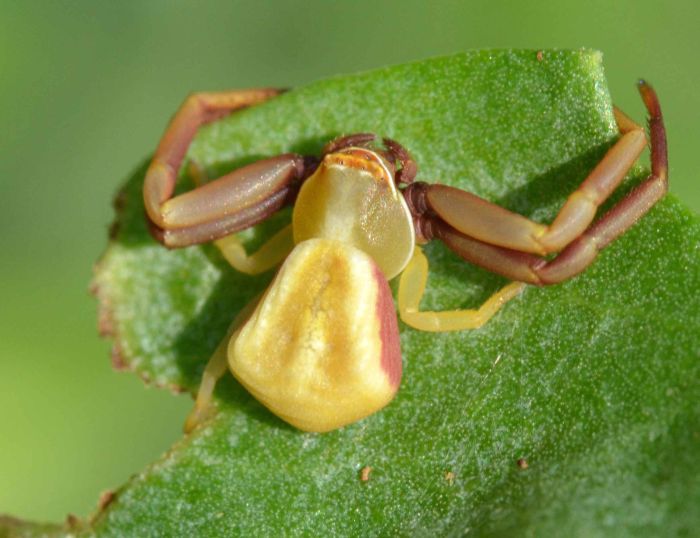 Misumenoides formosipes (Whitebanded Crab Spider). | I am amazed how diverse the females of this species (Misumenoides formosipes) look like. The common names reflect this situation: Whitebanded Crab Spider, Redbanded Crab Spider, Ridge-faced Flower Spider. This white ridge below the eyes appears to be a characteristic feature. It is an ambush predator and often found lurking in or near flowers. Males also feed on nectar.
bug guide (this photo): http://bugguide.net/node/view/561610 | |
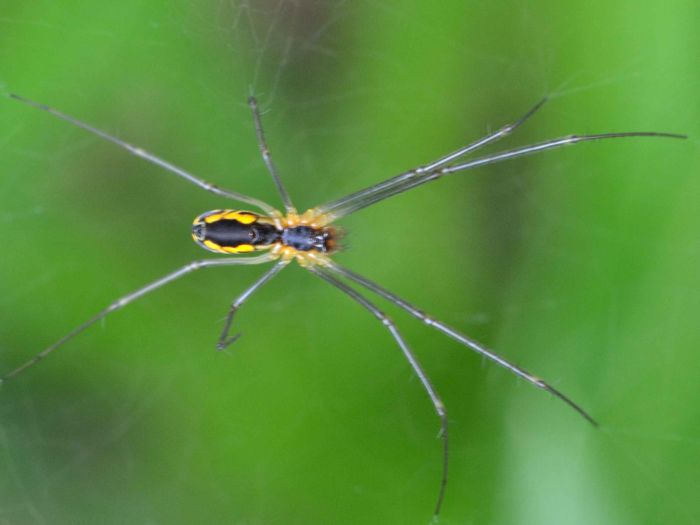 Neriene radiata (Filmy Dome Spider). | This is probably a Filmy Dome Spider (Neriene radiata). This species produces a dome of fine silk. The spiders then position themselves upside-down under the web. The second link has photos that match this specimen perhaps slightly better than most posted in the bug guide. The body without legs is approx. 5 mm long.
bug guide (this photo): http://bugguide.net/node/view/560226 eurospiders: http://www.eurospiders.com/Neriene_radiata.htm spiderling: http://www.spiderling.de/arages/Fotogalerie/Galerie_Neriene.htm | |
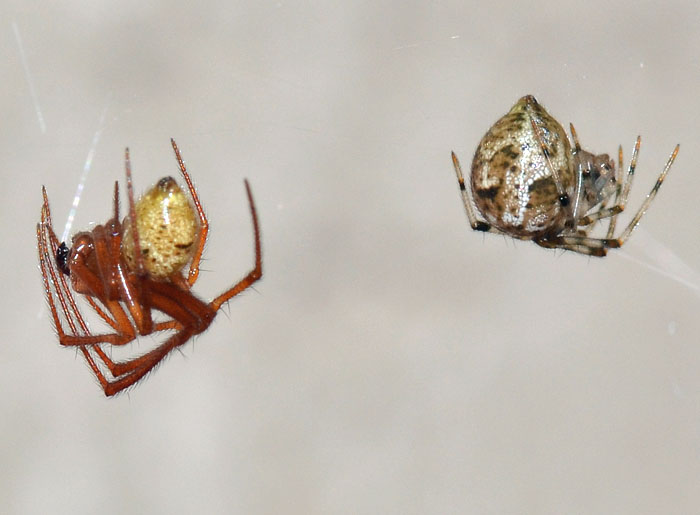 Parasteatoda tepidariorum (Common House Spider). | Outside of the US, the Common House Spider is referred to as the American House Spider. They build tangled webs often in or near houses and feed on flies, mosquitoes, ants, wasps, etc. They have poor vision and usually retreat or pretend to be dead if threatened. The wikipedia link contains additional information on the typically harmless and rare bites. bug guide (this photo): http://bugguide.net/node/view/946510 wikipedia: http://en.wikipedia.org/wiki/Parasteatoda_tepidariorum | |
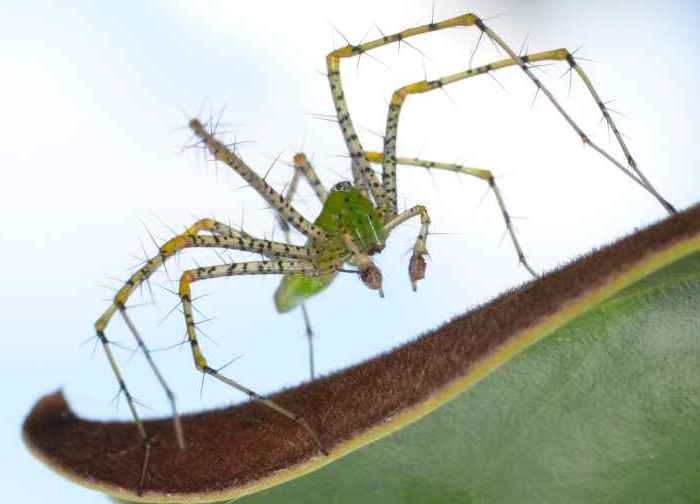 Peucetia viridans (Green Lynx Spider) ♂. | Lynx spiders are ferocious hunters. This one is a male of Peucetia viridans. Females can spit venom--in self defense--over a distance of up to 20 cm as described in the second link. The venom is apparently not dangerous to humans but can cause inflammation of the eye. They are common spiders in the Southern US and California.
bug guide (this photo): http://bugguide.net/node/view/566213 L. S. Fink J. Arachnol. 2 :373, 1984: http://alturl.com/n4f8n | |
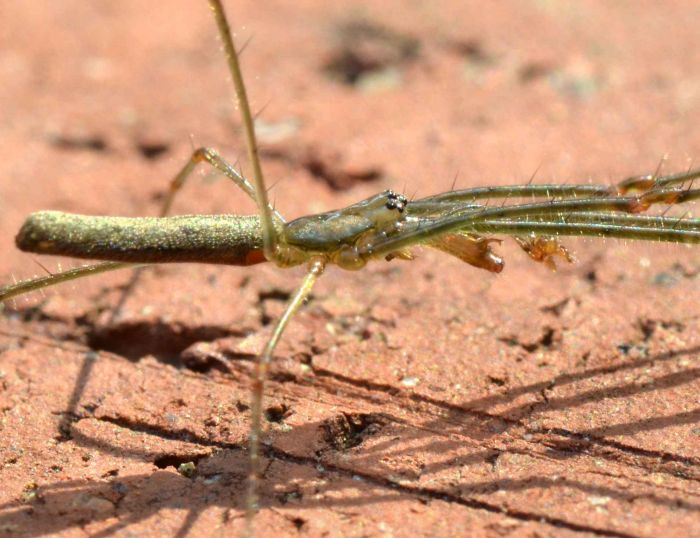 Tetragnatha sp. (Longjawed Orbweaver). | This Longjawed Orbweaver belongs to the genus Tetragnatha which has 15 species in North America. The species can be distinguished only from features such as the distance between the medial and the lateral eyes and the "lack the first distal, long tooth". They spin horizontal and circular (orb) webs, often directly over open water surfaces. This specimen had a body length of approx. 1 cm but the legs were much longer (see small photo below).
bug guide (this photo): http://bugguide.net/node/view/561622 | |
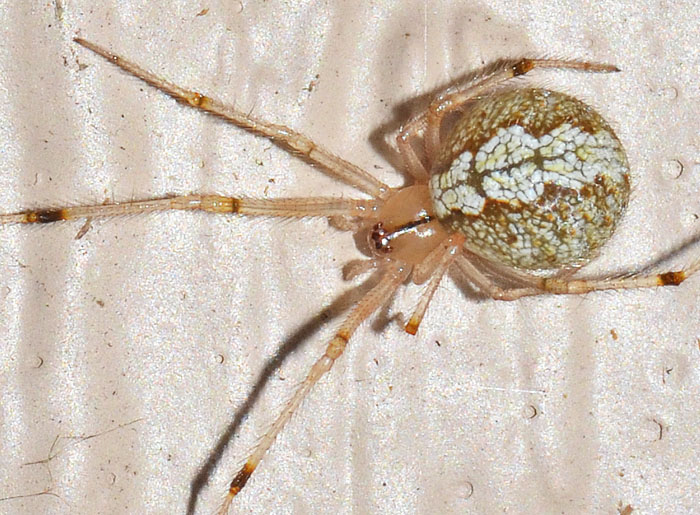 Theridion sp.. | A small cobweb spider of the genus Theridion that entails more than 60 North American species and the famous Hawaiian Happy Face Spider. bug guide (this photo): http://bugguide.net/node/view/1108149 | |
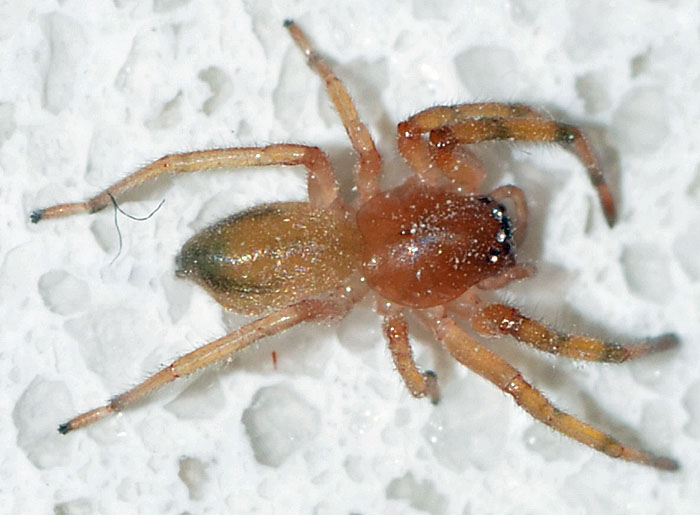 Trachelas sp.. | This spider belongs to the genus Trachelas. In North America, this genus has eight species, of which four are likely to be found in Florida. These hunting spiders do not spin a web but use silk for egg sacs and safety lines.
bug guide (these photos): http://bugguide.net/node/view/978880 Spiders.us: http://www.spiders.us/species/trachelas-tranquillus/ | |
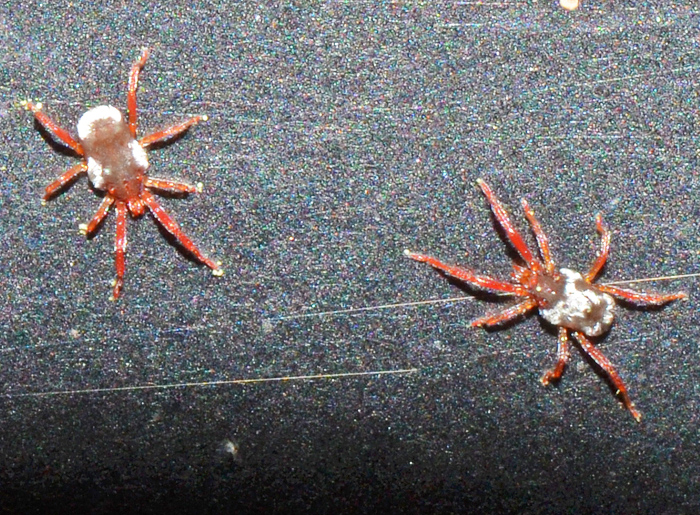 Leptus sp.. | Leptus belongs to the superfamily of long-legged velvet mites (Erythraeoidea). The larvae are common ectoparasites of arthropods such as harvestmen. Not much is known about these mites. bug guide (this photo): http://bugguide.net/node/view/1206564 |

